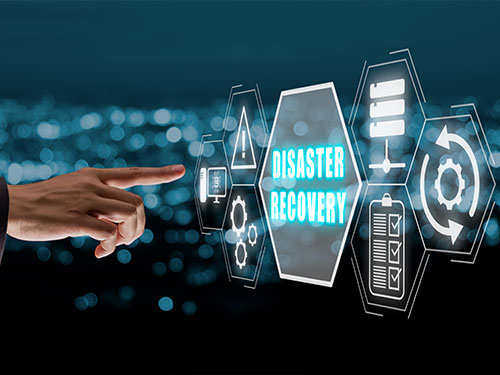
Transform your disaster recovery strategy
Resilience is more than withstanding the aftershocks, it’s building a business that thrives in the aftermath.
What is business resilience? McKinsey believes it’s the ability to emerge from a crisis better than before and with the ability to take advantage of opportunities that disruption has left behind. Resilience is, says the firm, constantly adapting for growth. Forrester says it is a competitive advantage, one that allows the company to actively look for opportunities by reacting dynamically to sudden events or crises. Gartner emphasises how digital is a critical investment into driving resilience in 2023 along with ‘coupling radical efficiency with innovation’.
Then, of course, there is disaster recovery which is also a fundamental part of embedding resilience within the business. No, it’s not the whole picture, but it’s one of the most important colours. Imagine the Mona Lisa without any black paint. That’s resilience without disaster recovery – the idea is there, but it’s not delivering any value. This is one of the reasons why backup, recovery, and digital have become synonymous with resilient business infrastructure, and why cloud disaster recovery is gaining traction.
Cloud makes it easier for companies to recover from a disaster while simultaneously boosting innovation and agility. Its ubiquity and security make it a trusted resource for backup and data management and the hyperscale environment is designed to make data protection more reliable and accessible. A powerful cloud ecosystem includes backup and recovery tools that put data at the forefront of recovery while allowing for the business to enjoy relatively unlimited storage space and this is key – your business wants 99.999999999% uptime, particularly in a crisis.
It is also cloud that offers the elasticity your business infrastructure needs to move at the speed of disruption and ensure performance throughout an event. Wedded to security and stability along with low-cost scalability, the cloud brings the business backup that’s capable and that fits with the bottom line. Traditional backup has a hefty price tag that the cloud can compete with very effectively – Alibaba Cloud uses proprietary deduplication technology and data lifecycle management optimisation that manages the movement of legacy data to low-cost cloud archives while reducing the volume of transmissions, storage, and excessive backups.
Of course, no business resilience solution would be worth its proverbial salt today without the benefit of Artificial Intelligence. The backbone of your cloud architecture should be comprised of next-generation technologies underpinned by intelligence. Generative AI (GAI) within the cloud not only smooths over the costs and optimises systems but ensures that enterprises have access to additional tools and services that allow for innovation and growth.
Added together, all these elements provide the business with improved stability, faster recovery time, richer resiliency, and greater flexibility. Balanced on the edge of demand versus scale, the cloud brings the business a sophisticated ecosystem that can evolve and adapt, and that can now use GAI to take these capabilities even further. A self-learning environment that can automate disaster recovery processes and refine resilience throughout the business without compromising on security and stability.
Alibaba Cloud with its next-generation GAI, 99.999999999% uptime, optimised data lifecycle management and robust disaster recovery provides your company with the flexibility and reliability it needs to recover at speed. The Alibaba environment acts as an extension of your on-premises environment, all within a warm standby that minimises recovery time while keeping the lights on throughout. Leveraging the unique Alibaba Cloud environment, you can transform your disaster recovery strategy while improving resilience and business capability.










